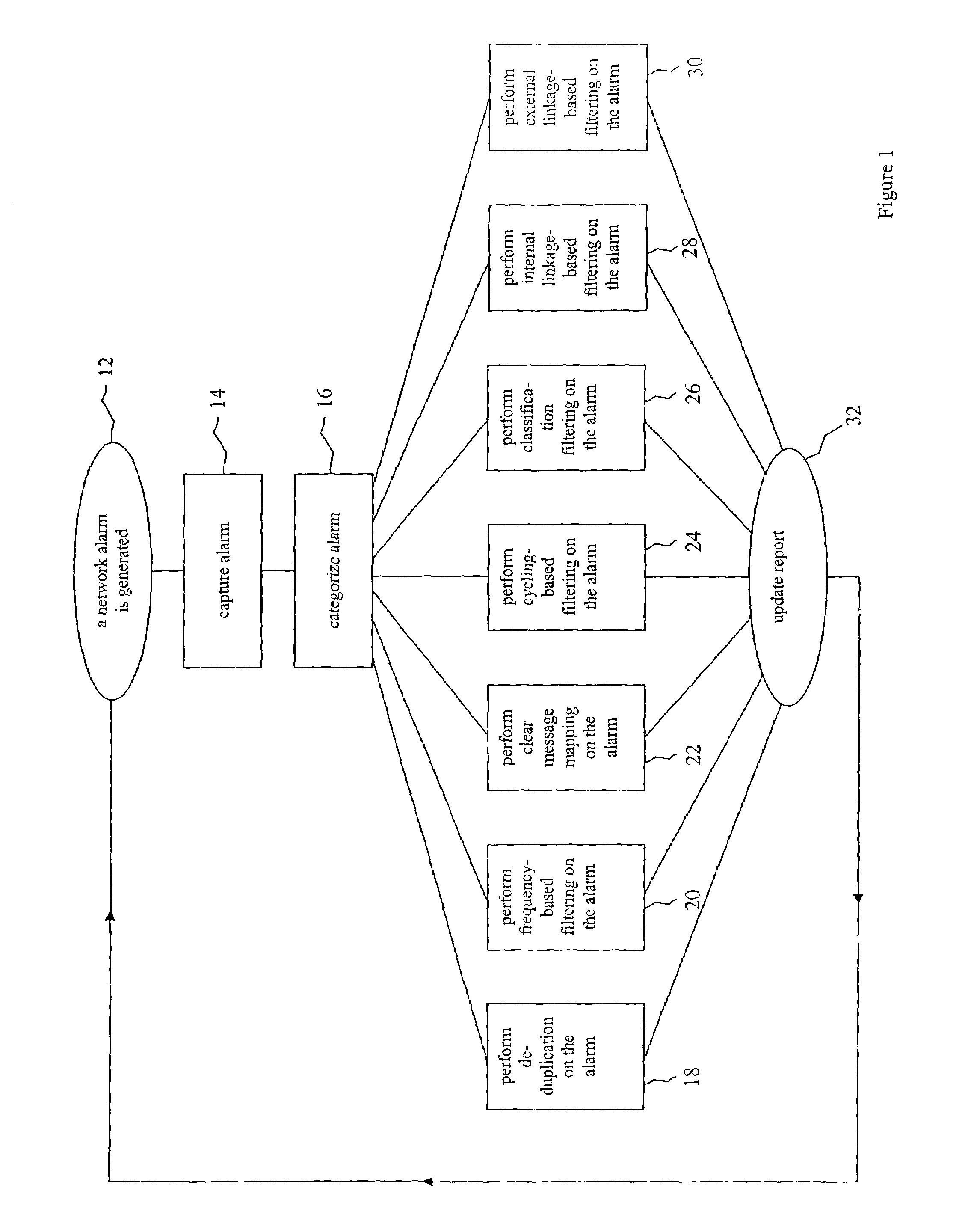Filtering approach for network system alarms
a network system and alarm technology, applied in the field of network alarm management, can solve problems such as network failure requiring immediate attention, alarms can overwhelm the staff of technicians charged with operating and maintaining the network, and abnormal or erroneous conditions
- Summary
- Abstract
- Description
- Claims
- Application Information
AI Technical Summary
Problems solved by technology
Method used
Image
Examples
Embodiment Construction
[0009]The filtering approach for network system alarms reduces the manual intervention needed to manage alarms. All network alarms are captured and then categorized based on the source and the type of the alarm. Depending on their category, alarms are then sent through one or more filtering systems that can reduce the number of alarms displayed by replacing the underlying alarms coming from the network with alarm representations. The reduction in the number of alarms may be referred to herein as removing alarms meeting certain criteria or selecting alarms meeting certain criteria. These terms are intended to be understood as effectively complementary, where selecting for certain criteria is intended to have the same meaning as removing all alarms which do not meet those criteria. The filtering systems may be viewed as components of a single overall filtering system or as a sequence of separate filtering systems working in concert or as a combination of the two. The use of the term s...
PUM
 Login to View More
Login to View More Abstract
Description
Claims
Application Information
 Login to View More
Login to View More - R&D
- Intellectual Property
- Life Sciences
- Materials
- Tech Scout
- Unparalleled Data Quality
- Higher Quality Content
- 60% Fewer Hallucinations
Browse by: Latest US Patents, China's latest patents, Technical Efficacy Thesaurus, Application Domain, Technology Topic, Popular Technical Reports.
© 2025 PatSnap. All rights reserved.Legal|Privacy policy|Modern Slavery Act Transparency Statement|Sitemap|About US| Contact US: help@patsnap.com


